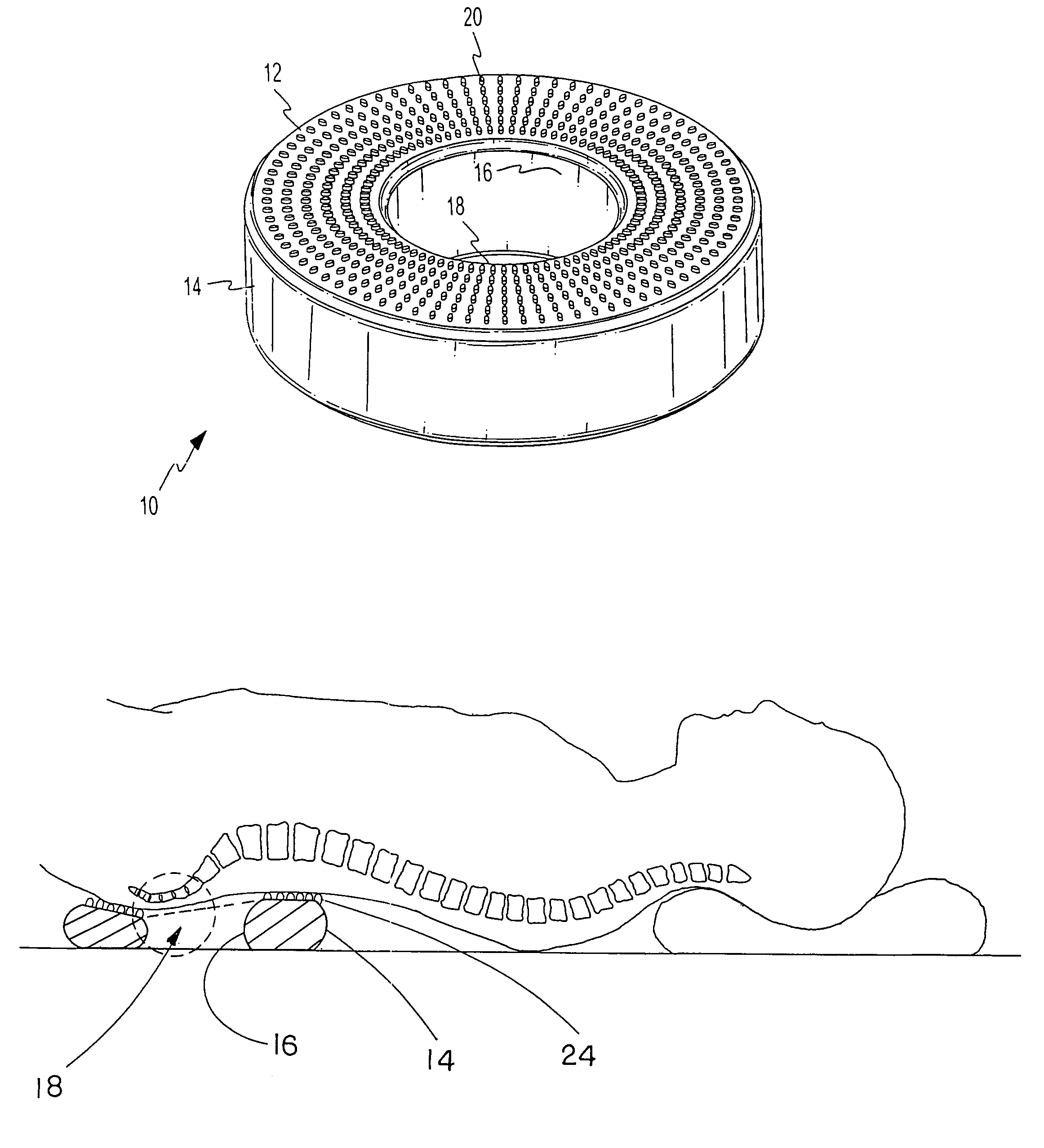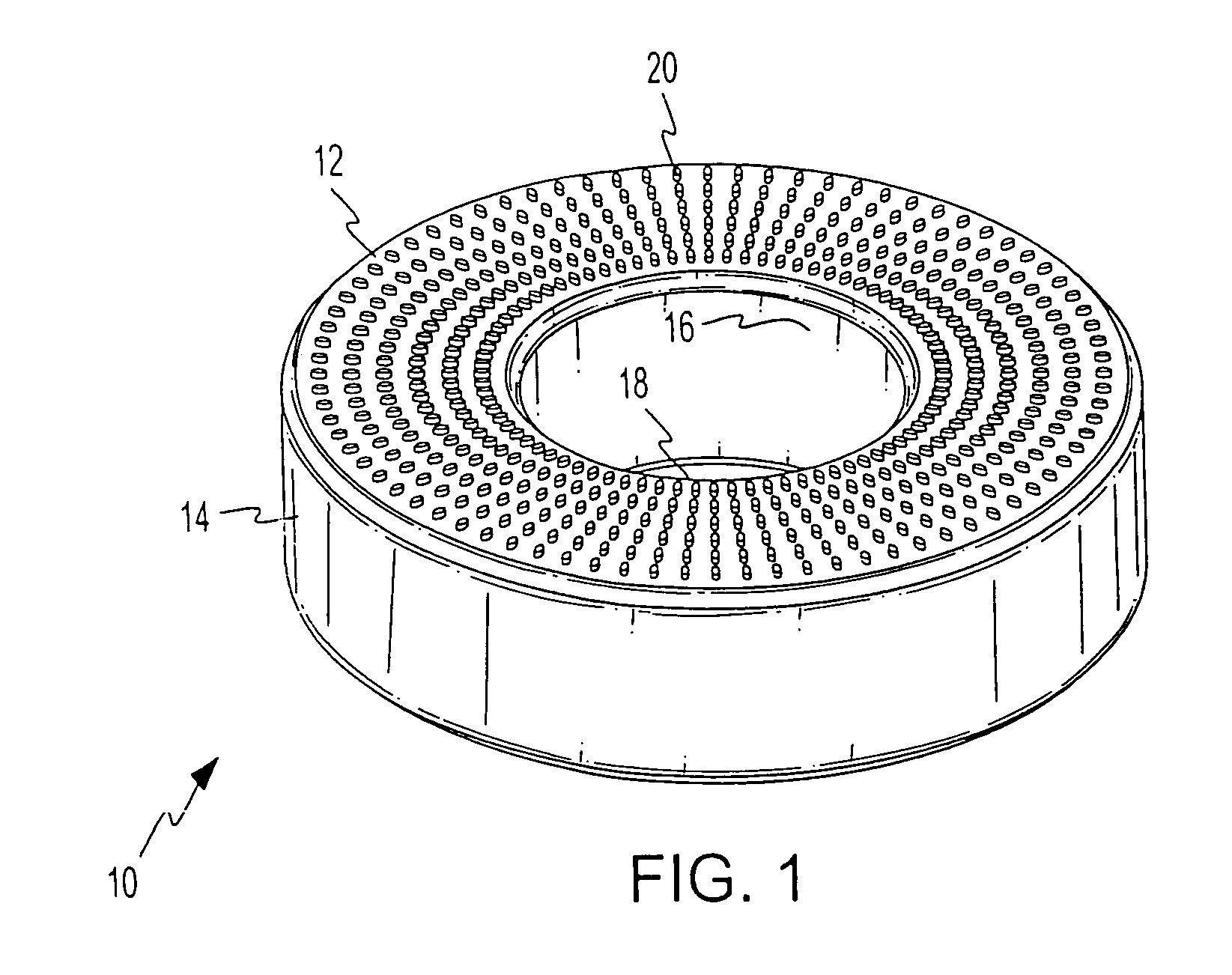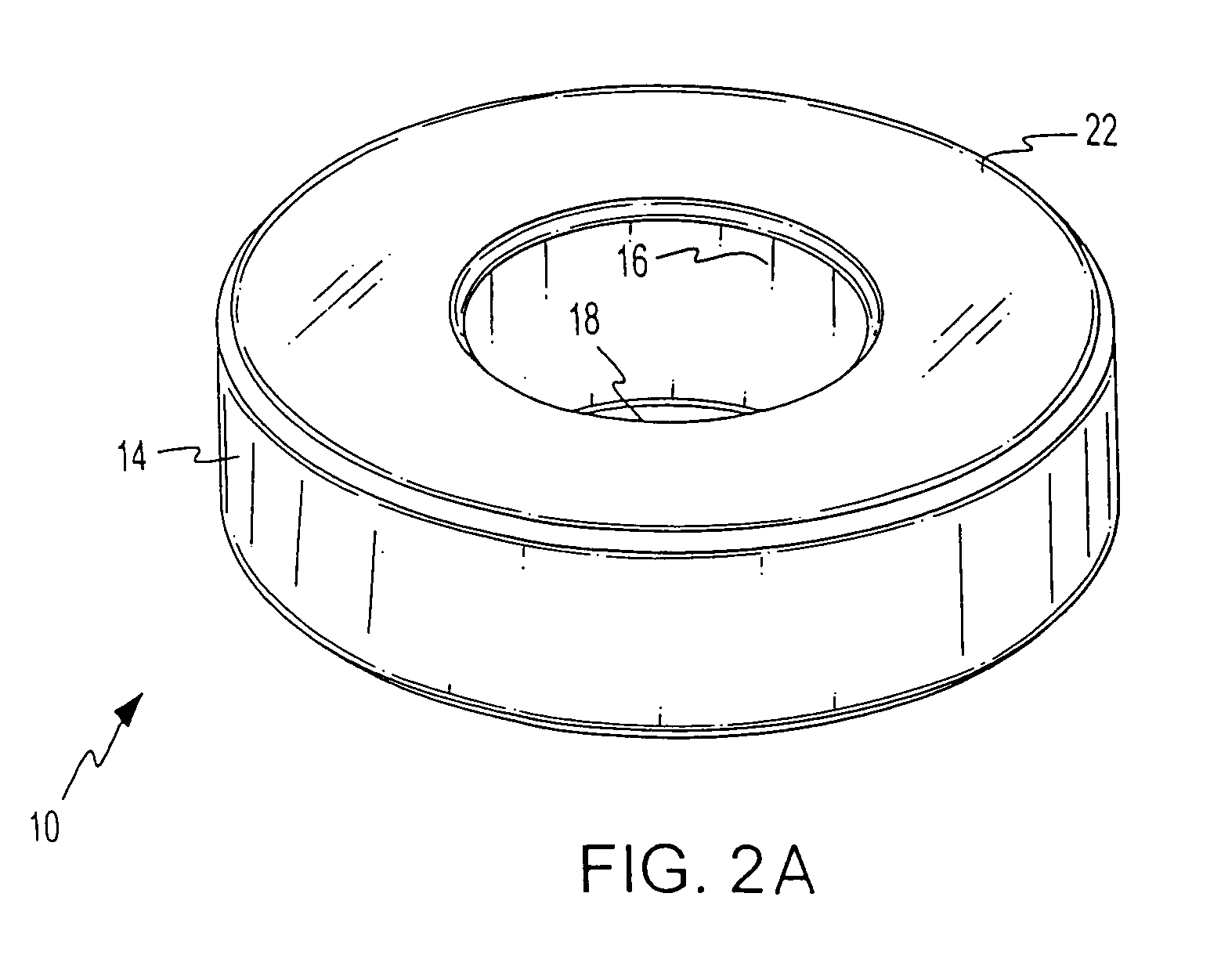Cushion to support patient with bed sores
- Summary
- Abstract
- Description
- Claims
- Application Information
AI Technical Summary
Benefits of technology
Problems solved by technology
Method used
Image
Examples
Embodiment Construction
[0057]Referring now to the drawings and, in particular, to FIG. 1 wherein there is illustrated a typical embodiment of the cushion to support patient with bed sores 10. The present version of the invention 10 is used to support the body of a person or portion thereof above a support device, such as bed in order to promote air and blood circulation at or in the vicinity of a wound, sore, ulcer, and the like. The provision of such air and blood circulation reduces discomfort associated with such skin afflictions and aids in healing thereof relieving and redistributing body weight and promoting air circulation over a portion of the body supported by said cushion. The cushion is circular and may be provided in various sizes (i.e. diameters and thicknesses) to accommodate a variety of patients, afflictions, and applications, such as a hospital, hospice, home, or other setting.
[0058]The cushion is comprised of a top sidewall 12, outer lateral sidewall 14, opposed inner lateral sidewall 16...
PUM
 Login to View More
Login to View More Abstract
Description
Claims
Application Information
 Login to View More
Login to View More - R&D
- Intellectual Property
- Life Sciences
- Materials
- Tech Scout
- Unparalleled Data Quality
- Higher Quality Content
- 60% Fewer Hallucinations
Browse by: Latest US Patents, China's latest patents, Technical Efficacy Thesaurus, Application Domain, Technology Topic, Popular Technical Reports.
© 2025 PatSnap. All rights reserved.Legal|Privacy policy|Modern Slavery Act Transparency Statement|Sitemap|About US| Contact US: help@patsnap.com



